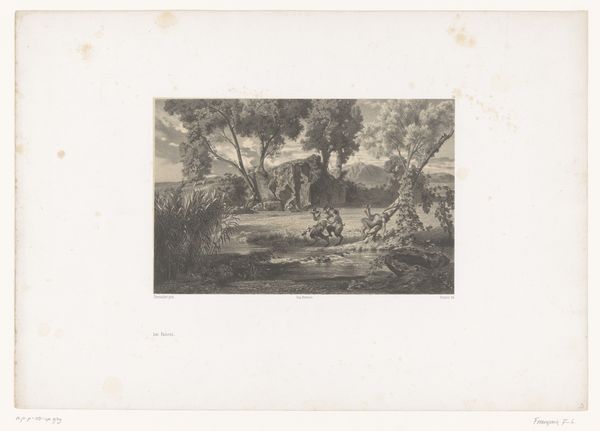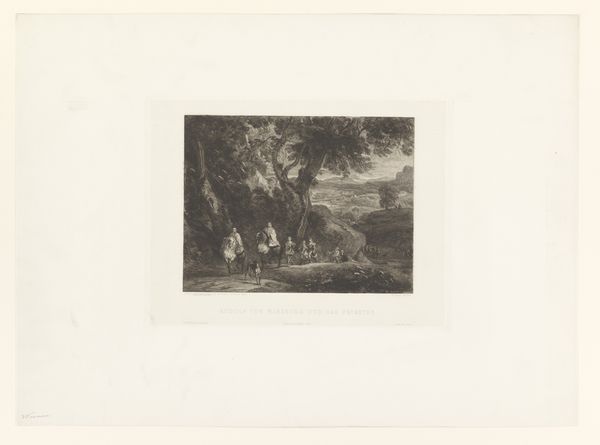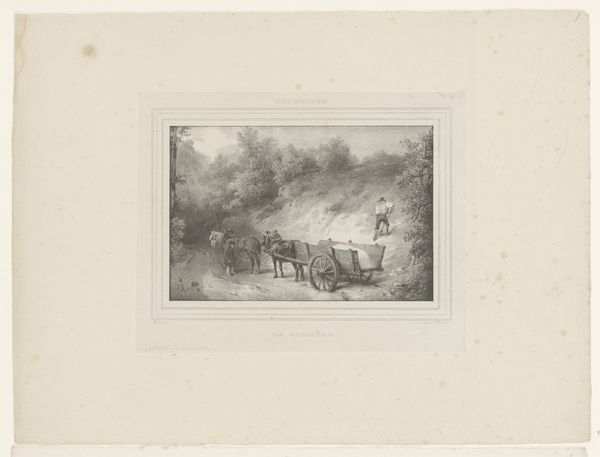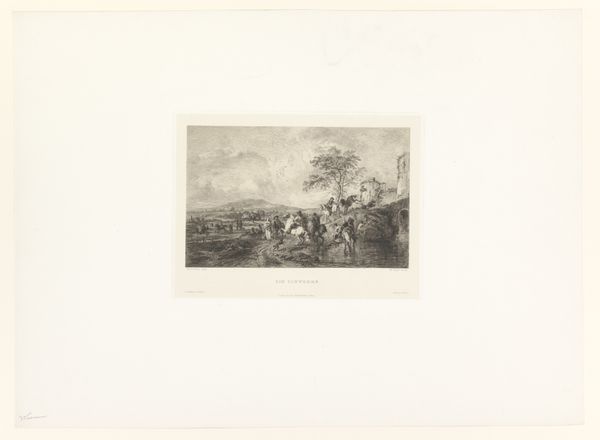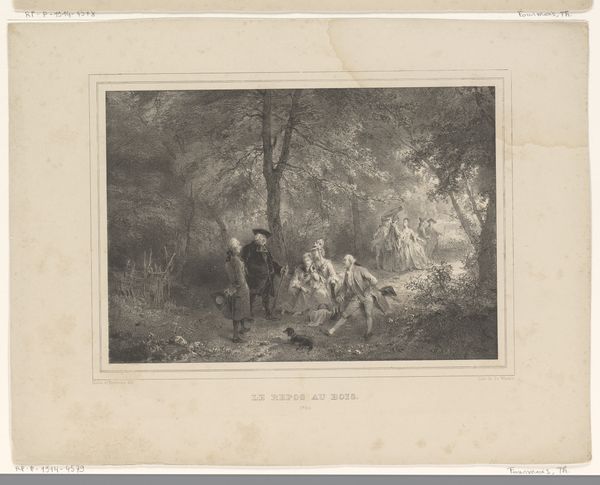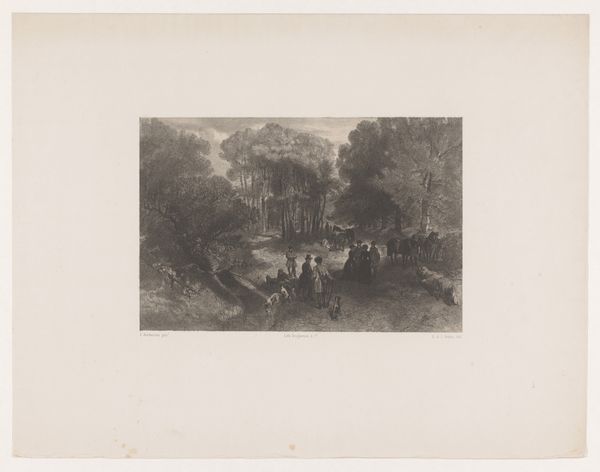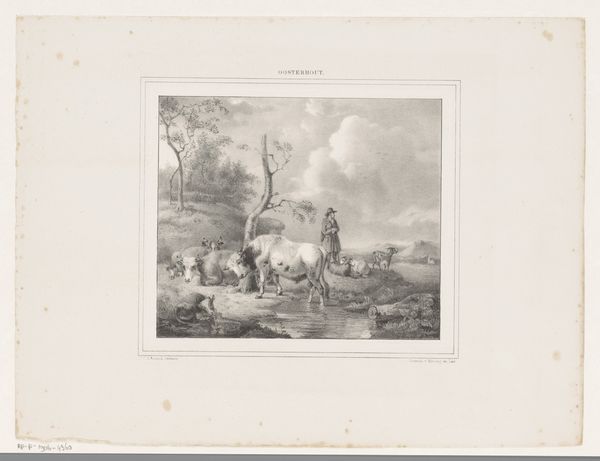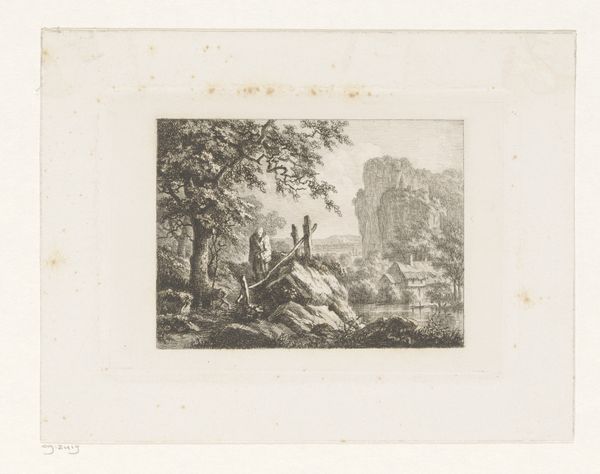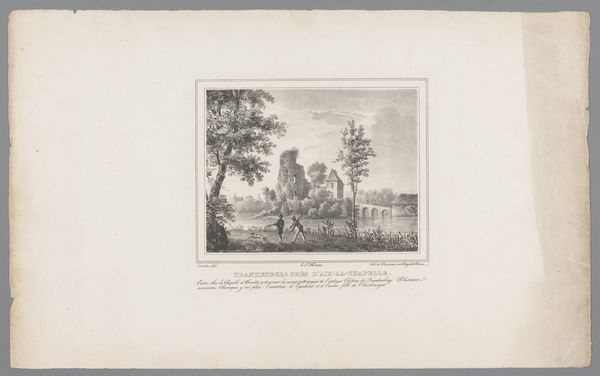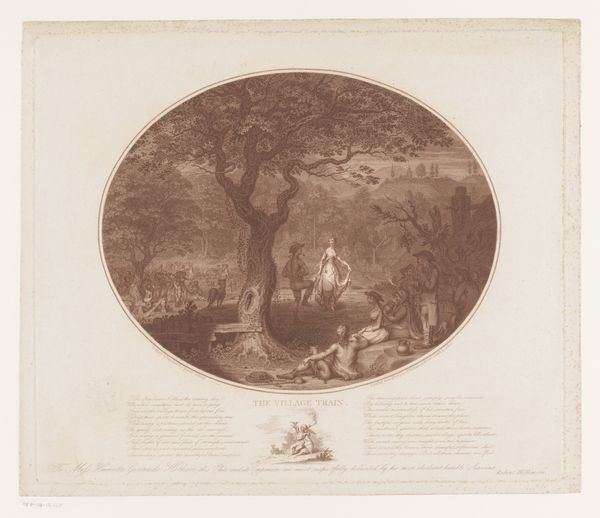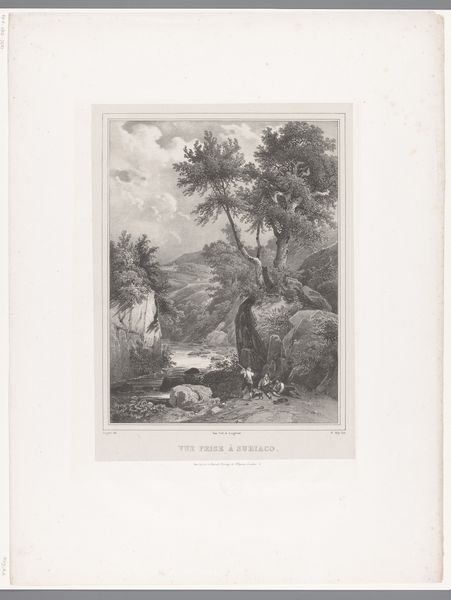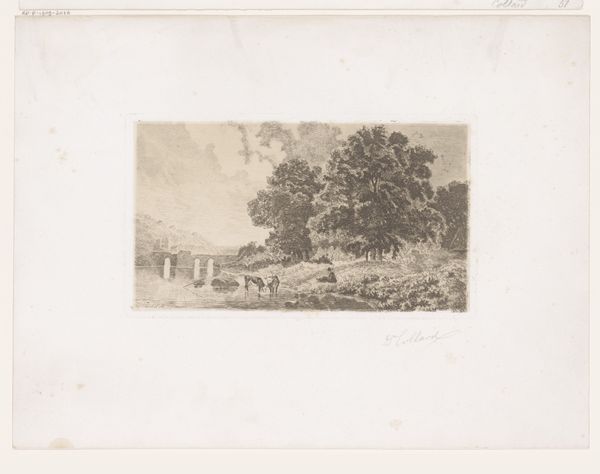
print, etching
# print
#
etching
#
landscape
#
forest
#
romanticism
#
genre-painting
Dimensions: height 273 mm, width 365 mm
Copyright: Rijks Museum: Open Domain
Editor: Here we have Jean-Baptiste Madou's "Landschap met figuren op een heuvel in een bos," or "Landscape with Figures on a Hill in a Forest," an etching from around 1831, currently residing in the Rijksmuseum. It feels like a stage, with the figures arranged almost like actors in a play. What do you see in this piece, considering its time? Curator: This piece, to me, speaks volumes about the Romantic era's yearning for simpler times, but through a lens that often obscured the realities of labour and class. The figures seem posed, idyllic, disconnected from the harshness of daily life. Considering Madou was working in a period of significant social upheaval, how do you think the print might function as a form of escapism or perhaps even a subtle commentary on social inequality, where leisure is portrayed but not necessarily accessible to all? Editor: That’s a compelling point. The figures do seem deliberately posed, like they’re performing an idea of leisure rather than actually experiencing it. So, perhaps Madou is showing us not just an escape, but an artificial construct of one? Curator: Precisely! And if we delve deeper, who gets to participate in this manufactured ideal? Notice how the darker lines and shading define a stark contrast between the light hitting the 'performers' and the implicit shadows surrounding them. Does this visual dichotomy invite viewers to question the boundaries of inclusion and exclusion? How might this portrayal reinforce or challenge existing social hierarchies of the time? Editor: I never would have thought to look at a landscape through that lens! Curator: Art provides fertile ground for inquiry, and this particular etching really highlights the artifice inherent in constructing "natural" scenes and the selective presentation of social realities. What does that understanding bring to your perception of the work? Editor: Now, it seems less like a simple landscape and more like a complex statement about who is allowed to enjoy beauty and leisure, and who is left outside the frame. I am forever changed! Curator: Indeed. And hopefully it underscores how art can be a powerful mirror reflecting, and refracting, societal norms.
Comments
No comments
Be the first to comment and join the conversation on the ultimate creative platform.
